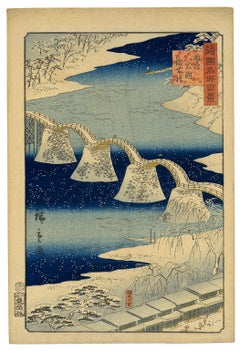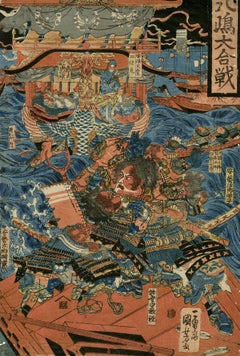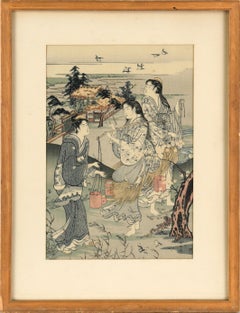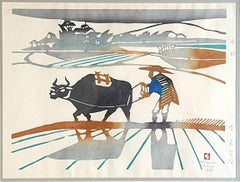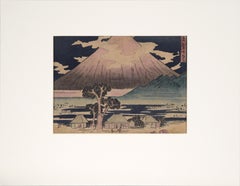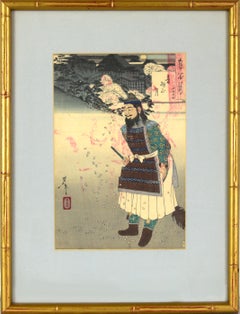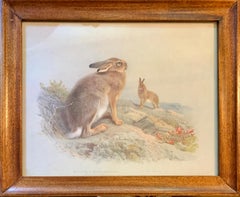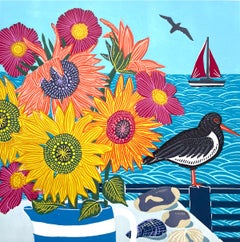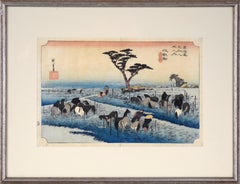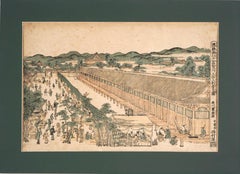Edo Landscape Prints
1850s Edo Landscape Prints
Woodcut
Early 19th Century Edo Landscape Prints
Watercolor, Handmade Paper, Woodcut
Late 18th Century Edo Landscape Prints
Paper, Ink, Woodcut
Mid-20th Century Edo Landscape Prints
Ink, Paper
1920s Edo Landscape Prints
Paper, Ink, Woodcut
1880s Edo Landscape Prints
Paper, Ink, Woodcut
1850s Edo Landscape Prints
Woodcut
1860s Edo Landscape Prints
Ink, Rice Paper, Woodcut
Late 18th Century Edo Landscape Prints
Ink, Wood Panel, Rice Paper
Mid-20th Century Edo Landscape Prints
Lithograph
Late 19th Century Edo Landscape Prints
Watercolor, Handmade Paper, Woodcut
1890s Edo Landscape Prints
Ink, Rice Paper, Woodcut
1820s Edo Landscape Prints
Ink, Rice Paper, Woodcut
Late 19th Century Edo Landscape Prints
Watercolor, Handmade Paper, Woodcut
1880s Edo Landscape Prints
Ink, Rice Paper, Woodcut
Early 19th Century Edo Landscape Prints
Paper, Ink, Woodcut
1850s Edo Landscape Prints
Woodcut
Early 1800s Edo Landscape Prints
Woodcut
Early 19th Century Edo Landscape Prints
Watercolor, Handmade Paper, Woodcut
1890s Edo Landscape Prints
Handmade Paper, Mulberry Paper, Woodcut
Late 19th Century Edo Landscape Prints
Watercolor, Handmade Paper, Woodcut
Late 19th Century Edo Landscape Prints
Handmade Paper, Watercolor, Woodcut
Early 19th Century Edo Landscape Prints
Ink, Rice Paper, Woodcut
1830s Edo Landscape Prints
Ink, Rice Paper, Woodcut
Mid-19th Century Edo Landscape Prints
Paper, Ink, Woodcut
1870s Edo Landscape Prints
Handmade Paper, Mulberry Paper, Woodcut
1890s Edo Landscape Prints
Handmade Paper, Mulberry Paper, Woodcut
1910s Edo Landscape Prints
Paper
2010s Edo Landscape Prints
Paper, Archival Ink
1880s Edo Landscape Prints
Ink, Rice Paper, Woodcut
1920s Edo Landscape Prints
Paper, Watercolor, Lithograph
1990s Edo Landscape Prints
Paper, Lithograph, Screen
2010s Edo Landscape Prints
Ink, Paper, Digital
21st Century and Contemporary Edo Landscape Prints
Screen, Ink, Paper, Digital
1890s Edo Landscape Prints
Ink, Rice Paper, Woodcut
1970s Edo Landscape Prints
Printer's Ink
Late 18th Century Edo Landscape Prints
Ink, Wood Panel, Rice Paper
1850s Edo Landscape Prints
Rice Paper, Woodcut
1850s Edo Landscape Prints
Rice Paper, Woodcut
1830s Edo Landscape Prints
Woodcut, Rice Paper
1760s Edo Landscape Prints
Ink, Paper
Early 19th Century Edo Landscape Prints
Ink, Rice Paper, Woodcut
Mid-19th Century Edo Landscape Prints
Brass
1940s Edo Landscape Prints
Ink, Laid Paper
Early 20th Century Edo Landscape Prints
Paper, Ink, Woodcut
1940s Edo Landscape Prints
Paper, Ink, Woodcut
1950s Edo Landscape Prints
Paper, Ink, Woodcut
Mid-19th Century Edo Landscape Prints
Ink, Handmade Paper, Woodcut
1940s Edo Landscape Prints
Ink, Laid Paper
Early 1900s Edo Landscape Prints
Stencil
Mid-19th Century Edo Landscape Prints
Woodcut
